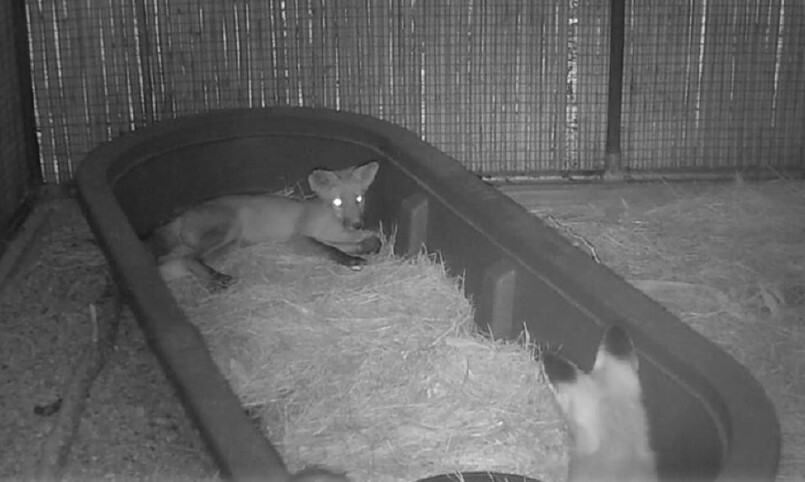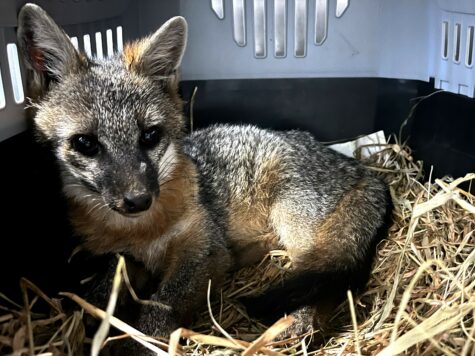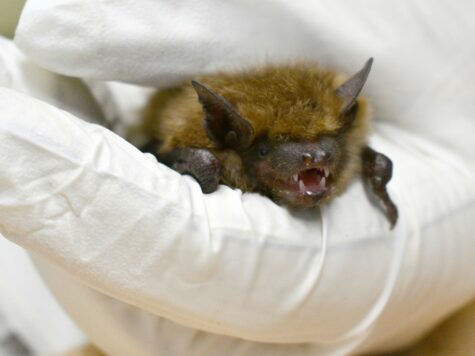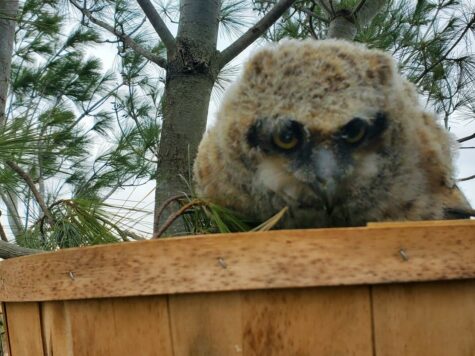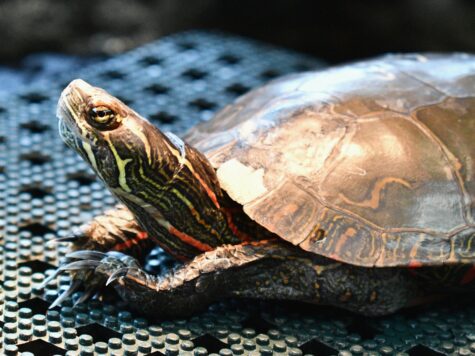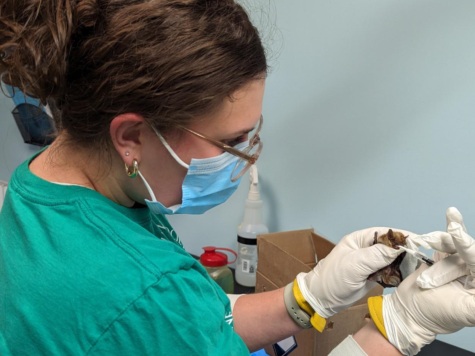Two young red foxes, #23-1232 and 1273, were brought to DCHS’s Wildlife Center by a property owner who had been observing the family in their backyard. The entire fox family had mange, and the fox mother had disappeared. We advised them to live-trap the young and bring them in for treatment. The first of two juveniles, (both male and presumed siblings) was caught and brought in late July; the other was caught in early August. They were housed separately indoors at first to more easily care for them, but after responding well to treatment they were reunited outside in the same enclosure. They were released together at the end of September.
Sarcoptic mange is caused by a mite which burrows into the skin causing intense itching. The fox then scratches causing crusting, fur loss, broken skin, and secondary infections. Sarcoptic mange is curable if the animal is treated before these complications become too severe. Left untreated, these conditions can be fatal.
It is important, however, not to attempt to medicate mange in the wild. Other animals can eat the medications and possibly overdose on them, and the related health complications of mange such as wounds, infections, starvation, hair loss, and hypothermia, cannot be appropriately treated unless they are captured. Animals with mange need to be in rehabilitation for these secondary complications otherwise their condition could worsen.
With red foxes living in closer quarters in urban areas, mange is unfortunately a common issue. Keep in mind that, although you may want to help these animals they may become defensive when approached. Capture of wildlife should only be attempted with direction from licensed wildlife rehabilitators, for the safety of all involved—human and animal alike.
Sarah Karls is a Senior Licensed Wildlife Rehabilitator at DCHS's Wildlife Center.
Top photo: Red fox siblings #23-1232 and 1273 enjoy the space in an outdoor enclosure at night.
Wildlife Center Helps Special Species
Special Species Update: Teddy the Domestic Fox
When this fox arrived at DCHS's Wildlife Center in July, staff knew right away he was not wild. This meant he couldn’t be released to the wild like a rehabilitated patient. Foxes have very specific needs unlikely to be met in a regular home, so he needed a specific placement with licensed experts who understand his species’ needs so he could thrive. Read how DCHS's Wildlife rehabilitators cared for Teddy and found him a new home.
